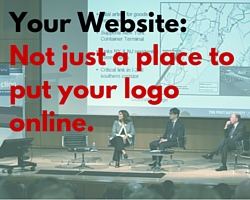When trying to determine the best marketing strategy for the growth of a company, it’s easy for a business owner to become disillusioned by the “mythology” of corporate marketing. You tentatively adopt a strategy, “do it,” and are not sure if it works, and, if it does, you have no idea why. There are so many jargon-heavy terms floating around, it can be hard to parse through what works, and what is just a red herring.

Larger, online-based companies have adopted the term “hyper-local” to refer to the complicated algorithms and expensive analytics that help them target the customers they want with mobile and online ads. It’s important to remember that for You, the small business owner, “hyper-local” marketing is just plain…Marketing! You are already targeting the right customers at the right time by being in touch with your audience through customer service and sales.
But First, Take a Step Back
 It’s still necessary, however, to develop a solid understanding of the relationship between your brick-and-mortar or e-commerce space and its online footprint. It’s always important to ask yourself the big questions before deciding where to dedicate your time when building your strategy:
It’s still necessary, however, to develop a solid understanding of the relationship between your brick-and-mortar or e-commerce space and its online footprint. It’s always important to ask yourself the big questions before deciding where to dedicate your time when building your strategy:
- What is your brand?
- What is your brand’s voice?
- Who is your audience?
- How do you communicate your brand to your audience?
- How does this communication turn your audience into customers?
And, in the internet age, importantly:
Where are your customers searching for your product or service online?
(Of course, if you have troubles answering these questions, don’t hesitate to reach out!)
Never Ignore Your Website
It’s easy to misunderstand the importance of a business website when online review sites such as Yelp or Google Business seem to build customers for you. Your website should not be just a sales channel for your product or service, but should work alongside your existing online presence (read: your Yelp reviews!) to be an extension of your company’s brand into the virtual space. Once you’ve created a strong business website, consider the way people are entering it.
- If people are being funneled through backdoor channels (such as the aforementioned Yelp reviews) are they staying?
- How well is your website doing in Google search rankings?
- If you are spending money for online ads, are people clicking on them?
- Are you using mechanisms like special offers for conversions?

The goal is to be specific with your audience. If you are not sending the right person to the right page, be ready to deal with a high bounce rate. Try utilizing unique landing pages with customized copy when doing local campaigns, so you can geo-target potential customer bases for events or conferences. Once they’re on your site, get them to stay with the key to all successful online marketing strategies: content!
Share what you do with your customers, and your website will become a dynamic part of your marketing strategy, not just a place to put your logo online.
The Right Focus on the Right Channel
Once you’ve built a strong website and begun to establish your online presence, it’s time to start experimenting. Set up Google analytics and test different channels until you start to understand the DNA of your local customers. When you figure out which channel your audience is using to communicate, you can know better where to allocate your resources. Take advantage of all social media outlets, but, depending on your industry, be sure to find the right blend.

- Don’t waste money on Facebook ads being seen by random audiences.
- Don’t direct people to a webpage that’s not targeted to them.
- Don’t spend hours on your Twitter account if your customers are talking about you on Yelp.
- Don’t have an Instagram account just…because you feel like you have to have one.
- Don’t spend money (& time!) to find customers instead of spending money for customers to find you!
The beauty of online is that you can switch things quickly if you see it’s not working.
Join the Conversation & Develop Your Voice
If you are doing a good job, allow your audience to speak for your business. Your continued great online reviews give strength to your online presence.

If you don’t like what your customers have to say, however, join the conversation! If you engage your “haters,” you still have an opportunity to turn a negative experience into a positive one. When you delight your customers, word of mouth will spread quickly. When it does, be ready with a solid website and brand presence! The combination of your active efforts as well as the inactive work done by your adoring audience will build the best representation of your business online.
Let your “hyper-local” marketing efforts go global and turn curious converts into lifetime customers.




 It’s still necessary, however, to develop a solid understanding of the relationship between your brick-and-mortar or e-commerce space and its online footprint. It’s always important to ask yourself the big questions before deciding where to dedicate your time when building your strategy:
It’s still necessary, however, to develop a solid understanding of the relationship between your brick-and-mortar or e-commerce space and its online footprint. It’s always important to ask yourself the big questions before deciding where to dedicate your time when building your strategy:



